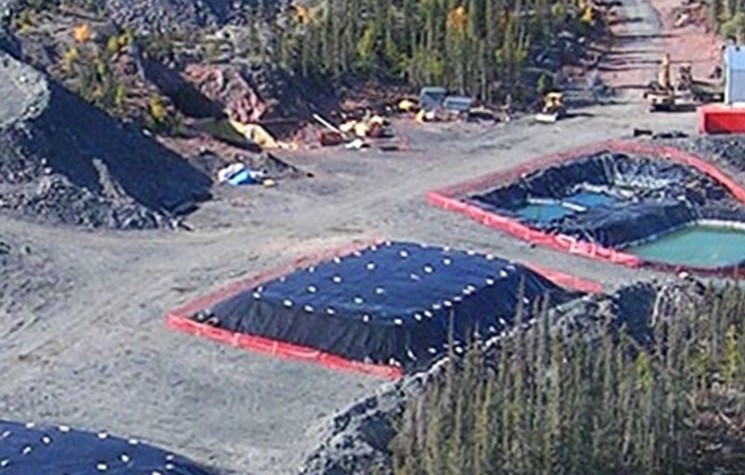Fortune Minerals Has Booked Its Maiden Mining Revenue, As It Weighs Financing Options For NICO

By Alastair Ford
“When we discovered NICO in the mid-1990s, only one per cent of cobalt consumed globally was used to manufacture rechargeable batteries”, says Fortune Minerals’ Troy Nazarewicz. “Now, with the ubiquity of smartphones and other portable electronics, it’s a little over 40 per cent.”
So a seismic shift has taken place over the past couple of decades, and the thinking is that there’s still more growth to come.
“The facility that Tesla’s building alone is expected to double the world’s production of lithium-ion batteries”, continues Troy.
For those not in the know, Tesla is the US electric car company backed by Elon Musk, the co-founder of Paypal and serial entrepreneur. Tesla currently has two models of electric car on the market, and plans to roll out two more within the next three or four years.
Beyond Tesla, LG Chem and Foxconn are planning major battery plants targeting vehicle electrification, with other smaller plants also scheduled to come online globally over the next few years.
The implications for Fortune Minerals are clear, according to Troy Nazarewicz. “Cobalt”, he says, “is a critical metal, important to the delivery of new digital and low-carbon technologies, including portable electronics, electric vehicles and stationary power storage, but is vulnerable to supply disruption. Given the anticipated cobalt shortage forecast by CRU and risk to the global supply chain with the concentration of reserves in the Congo, Fortune’s NICO project stands out as a potential reliable and vertically integrated North American source of battery grade cobalt chemicals.”
There is, he continues, a great transformation underway in the market for batteries, and it’s to this market that Fortune plans to address the primary product from NICO.
NICO actually contains a suite of metals, also including gold, bismuth and copper. “But”, says Troy, “under the metal price assumptions of the feasibility study, cobalt will be the dominant product by revenue”.
The feasibility envisages a vertically integrated project with an open pit mine and mill near Yellowknife in the Northwest Territories, and a hydrometallurgical refinery near Saskatoon, Saskatchewan where the company will process concentrates from the mine to value added metals and chemicals.
The plan is to produce nearly 70 million pounds of cobalt in cobalt sulphate and 814,000 ounces of gold over a 20 year mine life, plus 74 million pounds of bismuth and over 11 million pounds of copper. The pre-production capital cost is currently near C$600 million, with C$240 attributed to the construction of a refinery that has potential beyond simply processing the NICO material.
“We could do custom processing from other mines and envision that the refinery could also be expanded to include battery and metal recycling as a future business opportunity,” says Troy.
But be that as it may, there’s no doubt that bringing C$600 million of project finance into a company that’s currently only worth C$22 million represents a bit of a challenge, especially in the current depressed mining markets.
But the team at Fortune is undaunted. After all, they have plenty of experience both in bear markets and in bull markets, as Troy highlights. “The company was founded in 1988”, he says. “It went public in 1989. And the focus since then has always been to advance the Company with the least dilutive options available in the given environment.”
These are not normal times, however. “The more traditional financing options have been closed for some time”, says Troy. A different approach was needed.
With that in mind, a decision was made that a producing asset would be useful, as the more immediate transition to producer status would broaden Fortune’s market appeal and could provide operating cash flow to reduce its capital market requirements.
Accordingly, Fortune announced the acquisition of the Revenue silver mine in the late spring of last year, in a deal that was financed in part by the issue of shares to a strategic investor Procon, and also by entering into a production pre-payment facility with private equity group Lascaux in New York.
Fortune has already produced its maiden mining revenue from the sale of concentrates as it works to ramp up production and, although there were some delays in commissioning at the end of last year, it now looks as though Revenue will achieve its targeted production rate in late February. The mine is expected to produce about two million ounces of silver per year.
This will be its first regular mining income, and as such marks a significant step change for the company.
Even more significant will be the financing for NICO, which Fortune expects to secure through a combination of cash flow from Revenue, debt, project level equity and off-take agreements.
What would the terms of such a financing be? Well, at the moment that’s purely a matter for speculation. But it’s worth noting that the security situation in the Democratic Republic of Congo, which is the world’s main supplier of cobalt, is not getting any better. As demand continues to grow, and supply tightens, it seems more than likely that some of the world’s heavier hitters will start looking around for more reliable sources of the metal. It may be sooner than you think.
Comments (0)